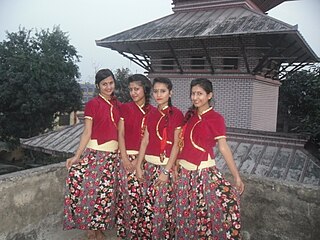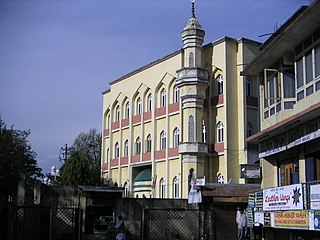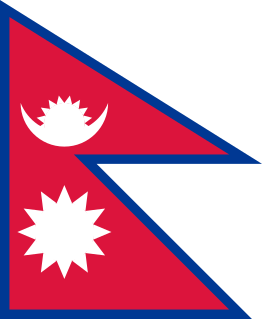
Kathmandu is the capital city and largest city of Nepal with a population of around 1 million. Kathmandu is also the largest metropolis in the Himalayan hill region. Nepali is the most spoken language in the city, while English is widely understood.

In the 2011 census, Nepal's population was approximately 26 million people with a population growth rate of 1.35% and a median age of 21.6 years. In 2016, the female median age was approximately 25 years old and the male median age was approximately 22 years old. Only 4.4% of the population is estimated to be more than 65 years old, comprising 681,252 females and 597,628 males. 61% of the population is between 15 and 64 years old, and 34.6% is younger than 14 years. In 2011, the Birth rate is estimated to be 22.17 births per 1,000 people with an infant mortality rate of 46 deaths per 1,000 live births. Compared to the infant mortality rate in 2006 of 48 deaths per 1000 live births, the 2011 IMR is a slight decrease within that 5-year period. Infant mortality rate in Nepal is higher in rural regions at 44 deaths per 1000 live births, whereas in urban regions the IMR is lower at 40 deaths per 1000 live births. This difference is due to a lack of delivery assistance services in rural communities compared to their urban counterparts who have better access to hospitals and neonatal clinics. Life expectancy at birth is estimated to be 67.44 years for females and 64.94 years for males. The mortality rate is estimated to be 681 deaths per 100,000 people. Net migration rate is estimated to be 61 migrants per 100,000 people. According to the 2011 census, 65.9% of the total population is literate.

The Communist Party of Nepal was one of the two major communist parties in Nepal. The party was formed in January 1991 with the unification of the Communist Party of Nepal (Marxist) and the Communist Party of Nepal (Marxist–Leninist). It has led four governments: from 1994 to 1995 under Man Mohan Adhikari, from 2009 to 2011 under Madhav Kumar Nepal, in 2011 under Jhala Nath Khanal, and from 2015 to 2016 under KP Sharma Oli. The party was also a junior partner in five coalition governments: in 1997 under Lokendra Bahadur Chand, from 1998 to 1999 under Girija Prasad Koirala, from 2008 to 2009 under Pushpa Kamal Dahal, from 2011 to 2013 under Baburam Bhattarai, and from 2014 to 2015 under Sushil Koirala. It dissolved on 17 May 2018 to make way for the Nepal Communist Party in a merger with the Communist Party of Nepal.

Miss Nepal is a national beauty pageant in Nepal. The winners are sent to Miss Universe, Miss Earth, Miss International and Miss World. Shrinkhala Khatiwada from Hetauda is the reigning Miss World Nepal 2018..

Newar, or Nepami, are the historical inhabitants of the Kathmandu Valley and its surrounding areas in Nepal and the creators of its historic heritage and civilisation. Newars form a linguistic and cultural community of primarily Indo-Aryan and Tibeto-Burman ethnicities following Hinduism and Buddhism with Newari as their common language. Newars have developed a division of labour and a sophisticated urban civilisation not seen elsewhere in the Himalayan foothills. Newars have continued their age-old traditions and practices and pride themselves as the true custodians of the religion, culture and civilisation of Nepal.

Buddhism in Nepal started spreading since the reign of Ashoka through Indian and Tibetan missionaries. The Kiratas were the first people in Nepal who embraced Gautama Buddha’s teachings, followed by the Licchavis and Newars. Buddha was born in Lumbini in the Shakya Kingdom. Lumbini is considered to lie in present-day Rupandehi district, Lumbini zone of Nepal. Buddhism is the second-largest religion in Nepal. According to 2011 census, the Buddhist population in Nepal is 9% of the country population. It has not been possible to assign with certainty the year in which Prince Siddhartha, the birth name of the Buddha, was born, it is usually placed at around 563 BCE. According to 2001 census, 10.74% of Nepal's population practice Buddhism, consisting mainly of Tibeto-Burman-speaking ethnicities, the Newar. In Nepal's hill and mountain regions Hinduism has absorbed Buddhist tenets to such an extent that in many cases they have shared deities as well as temples. For instance, the Muktinath Temple is sacred and a common house of worship for both Hindus and Buddhists.

The Nepal national cricket team nicknamed The Rhinos and Gorkhalis, represents the country of Nepal in the international cricket and is governed by the Cricket Association of Nepal (CAN). They have been an Associate Member of the International Cricket Council (ICC) since 1996. Nepal were awarded Twenty20 International (T20I) status by the ICC in June 2014 until the 2015 ICC World Twenty20 Qualifier. On 15 March 2018, Nepal gained One Day International (ODI) status for the first time, after winning the first playoff match in the 2018 Cricket World Cup Qualifier.

The culture of Nepal is intertwined with the culture of the border Indian subcontinent and Tibet. The cultural heritage of Nepal has evolved over the centuries. This multi-dimensional heritage bounds the diversities of Nepal's ethnic, tribal, and social groups, and it expresses in music and dance; art and craft; folklore and folktales; languages and literature; philosophy and religion; festivals and celebration; foods and drinks. Its culture is mostly influenced by Indian culture and Tibetan culture.
Nepal Standard Time (NPT) is the time zone for Nepal. With a time offset from Coordinated Universal Time (UTC) of UTC+05:45 all over Nepal, it is one of only three time zones with a 45-minute offset from UTC.

Chhetri, historically called Kshettriya or Kshetriya, are Nepali speakers of Khas Rajput community originating from medieval India. Chhetri was a caste of administrators, governor and military elites in medieval Khas Kingdom and Gorkha Kingdom. The nobility of Gorkha Kingdom were mainly based from Chhetri families and they had a strong presence in civil administration affairs. The bulk of Prime Ministers of Nepal before democratization of Nepal belonged to this caste as a result of old Gorkhali aristocracy. Gorkha-based aristocratic Chhetri families were Pande dynasty, Basnyat dynasty, Thapa dynasty and Kunwars.

Islam is a minority religion in Nepal. According to the 2011 Nepal census, Nepal has 1 million Muslims comprising 4.4% of the population of Nepal.

The Nepalis are citizens of the Federal Democratic Republic of Nepal under the provisions of Nepali nationality law. The country is home to people of many different national and ethnic origins. As a result, people of Nepal do not equate their nationality with ethnicity, but with citizenship and allegiance. Although citizens make up the majority of Nepali, non-citizen residents, dual citizen and expatriates may also claim a Nepali identity.

The 2011 National census lists 123 Nepalese languages spoken as a mother tongue in Nepal. Most belong to the Indo-Aryan and Sino-Tibetan language families.

Nepalese passports are issued to the citizens of Nepal for international travel.

A Village Development Committee (VDC) in Nepal was the lower administrative part of its Ministry of Federal Affairs and Local Development. Each district had several VDCs, similar to municipalities but with greater public-government interaction and administration. There were 3,157 village development committees in Nepal. Each VDC was further divided into several wards depending on the population of the district; the average being nine wards.
The 1991 Nepal census was a widespread national census conducted by the Nepal Central Bureau of Statistics.
Nepal conducted a widespread national census in 2011 by the Nepal Central Bureau of Statistics. Working with the 58 municipalities and the 3915 Village Development Committees at a district level, they recorded data from all the municipalities and villages of each district. The data included statistics on population size, households, sex and age distribution, place of birth, residence characteristics, literacy, marital status, religion, language spoken, caste/ethnic group, economically active population, education, number of children, employment status, and occupation.















